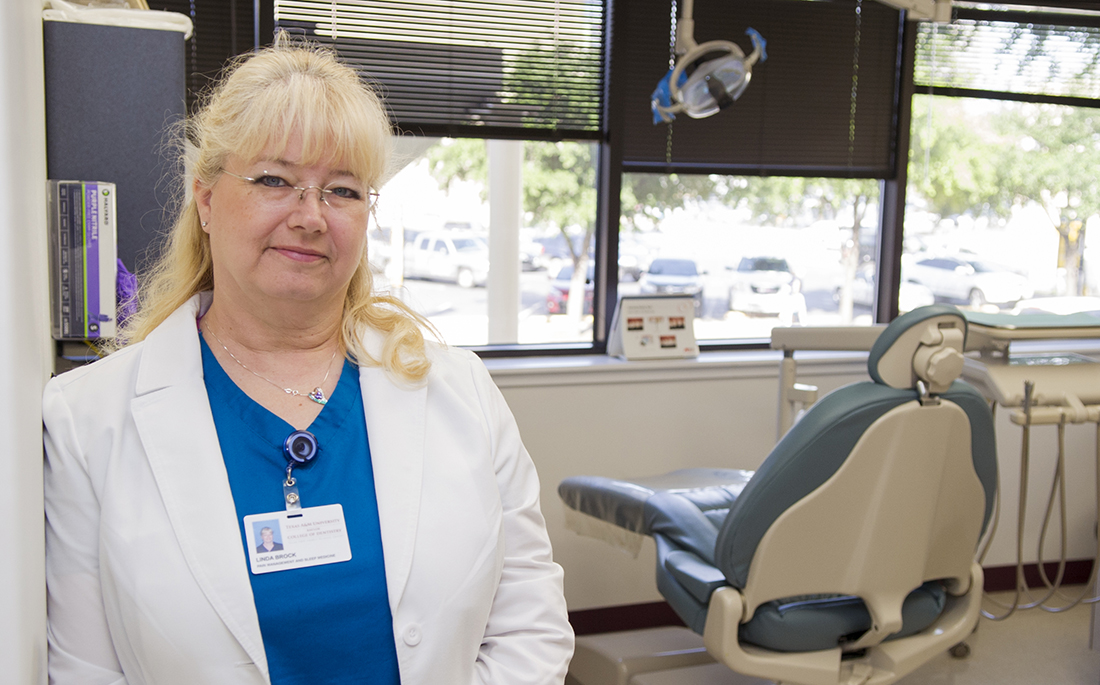Our people

Somewhere along the drive from Nebraska to Texas, the phone started ringing. Just a couple years prior, Linda Brock and her husband, Walter, had moved to Fullerton, Nebraska, to be closer to family following her mother’s death. Now it was time to return home to Dallas.
“I’m getting all these phone calls from people in the DFW area. I asked them, ‘How do you even know I’m moving to Texas?’” Brock recalls.
Her former boss, a dentist who primarily treats patients with temporomandibular joint disorders, had flooded the region’s practitioners with recommendation letters. Among the recipients: Dr. Steven Bender ’86, who at the time owned a Plano-based practice dedicated to patients with TMJ pain and sleep-disordered breathing.
Brock had nearly committed to a group practice when she decided to interview with Bender and his wife, then the office manager. She walked in, spotted a crown of thorns on a cabinet in the waiting room, and knew she was in the right place.
That was 10 years ago.
So when Bender eyed the opportunity to help establish the Center for Facial Pain and Sleep Medicine at Texas A&M University College of Dentistry in fall 2015, bringing his longtime assistant to the college was just a part of the deal. While Brock started working at the dental school in January 2016, her roles from the private practice setting remain unchanged. She welcomes patients, readies the room for appointments, sterilizes it. She schedules appointments and coordinates with referring doctors. For new exams, she gathers data and records the patient narrative. When patients are in the office, she makes sure they are comfortable. In the days and weeks that follow, she calls them, checking in on their progress. In a sense, she walks alongside them, as a medical assistant, counselor and friend.
“Linda is probably most known for her faith and her willingness to share a message of hope to all she meets,” says Bender, director of the pain and sleep center. “I often think that our patients come primarily to visit with Linda and not me!”
Those patients travel to the center from all over: the East Coast, California, even from international locales such as Greece and Italy. Bender and Brock average six to ten patient visits a day, with many appointments lasting 90 minutes. It’s not like your typical dental visit. In addition to a detailed health history, there’s ample dialogue to get to the source of pain that can’t necessarily be seen.
“You see miracles every day,” Brock says of her job. “It’s just so amazing when we can take away people’s chronic pain.” Like the female patient they visited with just earlier that day who for three years suffered from burning mouth, a burning sensation that occurs on the tongue and sometimes lips, often spontaneously and without an exact known cause. “She can taste again,” Brock grins.
Or cases of trigeminal neuralgia, sometimes fueled by shingles, other times trauma, and in some cases, is idiopathic. Its pain hits hard, like an electrical storm in a patient’s head. As for the condition’s telltale incessant zaps: “We can fix that,” she adds. “We are giving people hope, and who wouldn’t get excited about that?”
While assisting in the transition of Bender’s private practice to the dental school has not been without its challenges — like syncing a years’ worth of schedules from their previous patient scheduling software to the college’s Axium system — Brock is quick to point out a benefit to working in an eight-story building with hundreds of other individuals: “I’m from a small town, and this reminds me of being in a small town. Everyone knows everything going on with you, and everyone is so quick to jump in and help you. It’s like being in a small town in a big city.”